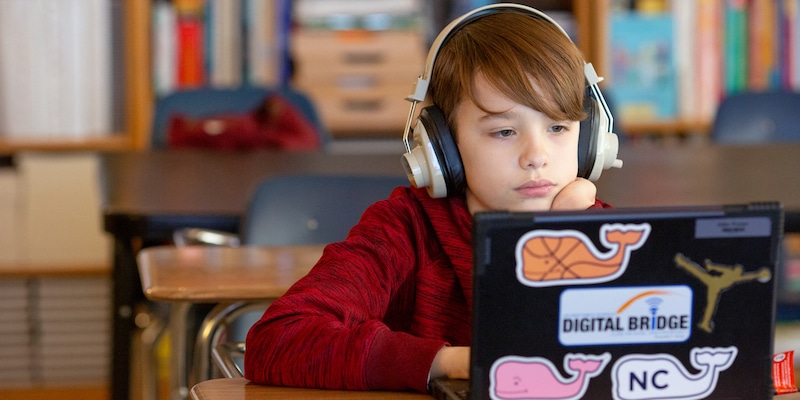Even for the best educators, meeting every student’s needs can prove elusive. Most schools operate a rigid system of teacher-led, whole-class instruction that moves at a single pace and is designed for order and efficiency, not adaptability. This system works well enough for students whose lives and way of learning happen to conform to its expectations. But some students don’t fit well into the boxes of conventional schooling. And despite the concern and dedication of educators, those students all too often slip through the cracks.
According to the New York Times, as of May this year, only a small percentage of US schools remained closed. Yet more than a third of fourth- and eighth-graders, and an even larger group of high school students, remained in fully remote learning. The share of non-returning students was even higher among Black, Hispanic, and Asian-American populations. According to the New York Times, there’s actually a new term for this: “school hesitancy.” Because of the varying needs of an increasingly diverse student body post-pandemic, “student hesitancy” is likely to stick around this fall and potentially into the future. To meet this reality, more flexible school and classroom experiences for students should become a must.
As an illustration of the difference that flexible options can make in the lives of students, consider one student’s story that predates the pandemic.
For Virginia, conventional schooling initially worked. She put in the effort to show up on time, follow instructions, complete her assignments, and earned As and Bs in her classes. But when she was 15 years old, her father took his own life, and the grief and trauma understandably affected every aspect of her life. At first, she tried to forge on with school, but she found herself making regular trips to the school nurse’s office in tears. Virginia’s schooling stalled. After receiving treatment at a behavioral health hospital, she was diagnosed with Asperger syndrome, anxiety, and depression. Yet when her emotions overwhelmed her at school, teachers would often handle the situation by sending her to a detention room to calm down.
The next school year, Virginia tried her best to rally but unanticipated challenges struck again: two major surgeries caused her to miss a significant amount of class time. With two consecutive years of setbacks, she opted to drop out of school and look for work.
At the age of 22, Virginia supported herself by working at Dunkin’ Donuts. The dream of earning a high school diploma seemed to have passed her by. Yet one day at work, she was excited to see two familiar faces come into the store: Rachel Babcock and Josh Charpentier, who had both previously worked for the local school district helping students like Virginia catch up on credits. They had come to invite her to finish her high school diploma at Map Academy, a new charter school they had created for students who were not on track to graduate. As soon as she clocked out of her shift at work that day, Virginia completed the paperwork to enroll in Map Academy. She felt newly optimistic, like her life was about to change.
For Virginia, Map Academy was a model of schooling that worked where others had failed. The school’s blended and individually-paced approach to instruction enabled the school’s staff to give her the support she needed. She described how “when you feel accepted and understood by teachers, it’s easier to talk to them. . . . They make us feel like we’re all equal. . . . In regular school, I would never raise my hand because I just felt like I was such an outcast. But here, they don’t let anyone feel like an outcast.”
This kind of supportive environment was what she needed to put her back on a path to educational success. At Map, “I get to experiment on what I want,” Virginia said. “It opens my mind and challenges me more. . . . It helps me find myself as a person in a way too.” In spring 2020, Virginia earned her diploma and is now working on plans to get a postsecondary education in computer science or data analysis.
To learn more about Map Academy, check out the report on their program in Think Forward New England project produced by the Center for Reinventing Public Education (CRPE).
Photo by Allison Shelley for EDUimages.



